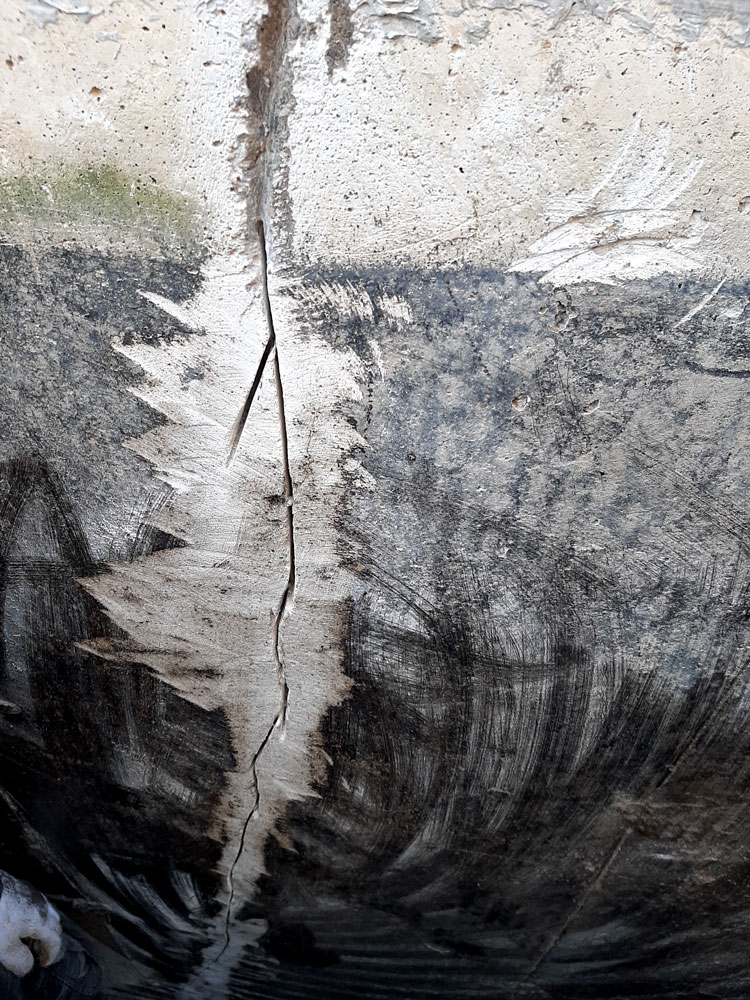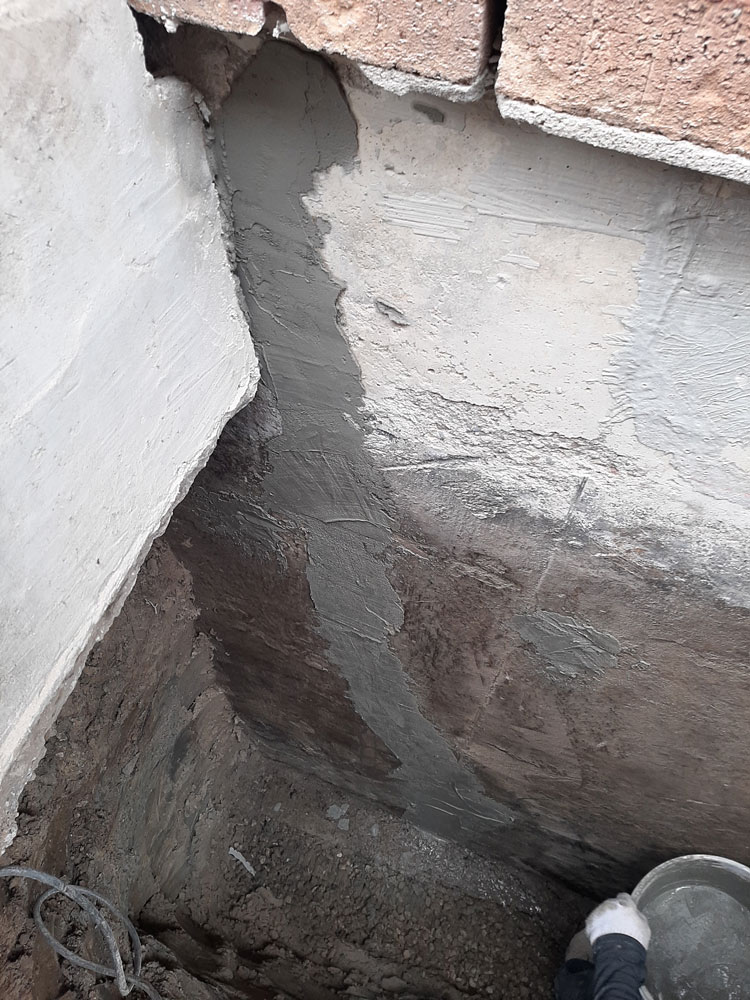Foundation cracks can occur for many reasons: soil condition/settlements (high water tables, saturated soils, etc.), poor construction (bad concrete mix, bad backfilling, etc.), an act of God (frost quakes, earthquakes, etc.), or as your home naturally settles over time. While not all cracks are serious, their location, size, and direction matter when it comes to water finding its way into your home.
Call Prime Waterproofing if you have any of the following issues within your home, and our experienced team will do a thorough analysis of the foundation and any cracks:
Vertical foundation cracks can be fixed from the inside using either a urethane or epoxy injection, which is inserted into the foundation crack to fill, bond, and seal the crack. The sealing material will provide waterproofing protection and is a permanent repair solution that need not be repeated in the future, in the same location. Note that not every vertical foundation crack can be repaired with this method, and a consultation with a Prime Waterproofing expert is encouraged beforehand.
Vertical foundation cracks may also be fixed by using an exterior waterproofing solution. Prime Waterproofing would dig down to the footing of the foundation, seal water out using rubberized urethane, install a Bituthene membrane along the exterior foundation wall, and add a drainage board. Either repair method should be considered as quickly as possible to prevent further damage to your home.
Horizontal foundation cracks, or ‘structural cracks’ are serious and pose a threat to the structural integrity of your home and can bow your foundation. Prime Waterproofing would have a structural engineer assess whether adding posts/braces in the basement or using anchors in the soil would be the best course of action to create a solid foundation wall again. Fixing structural foundation problems can be problematic and costly, so we recommend trying to catch the signs of a bad foundation early, to potentially avoid a major home repair.



